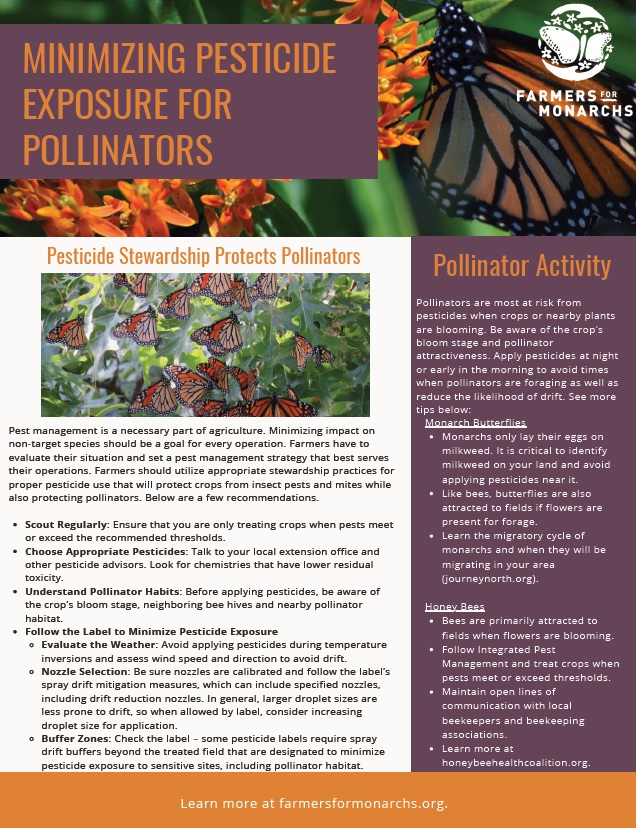Farmers have successfully implemented sensible monarch conservation principles that also support productive agriculture and livestock operations. Pest management is an important part of those viable operations, which is why Farmers for Monarchs has written extensively about responsible pesticide use and shared steps producers can take to mitigate pesticide exposure for pollinators. We have now produced a reference document that details best practices for pesticide use with an emphasis on protecting pollinators like the monarch butterfly.

Titled “Minimizing Pesticide Exposure for Pollinators,” the one-page document is a shareable resource that farmers and producers can use for their own reference, or distribute to other producers.
The document details several recommendations we have shared in blog posts to help farmers utilize practical pesticide stewardship with an added goal of protecting pollinators, like:
- Scout Regularly: Ensure that you are only treating crops when pests meet or exceed the recommended economic thresholds.
- Choose Appropriate Pesticides: Talk to your local extension agents and other pesticide advisors. Prioritize use of crop protection products that have lower residual toxicity.
- Understand Pollinator Behavior: Before applying pesticides, be aware of the crop bloom stage, avoid periods of peak pollinator activity, and be conscious of neighboring bee hives and pollinator habitats.
- Follow the Label to Minimize Pesticide Exposure
Pollinators are attracted to blooming plants. Therefore when pesticides are applied to or near blooming plants, the risk of exposure is increased. The document provides guidance on monitoring a crop’s bloom stage and pollinator attractiveness.
Minimizing Pesticide Exposure for Pollinators is one of several one-page documents recently developed by Farmers for Monarchs. Other documents include overviews of the Conservation Reserve Program, Planting for Pollinators, and Monarch Friendly Mowing. You can download the one-pagers along with a Farmers for Monarchs informational postcard by visiting our National Information Page.
